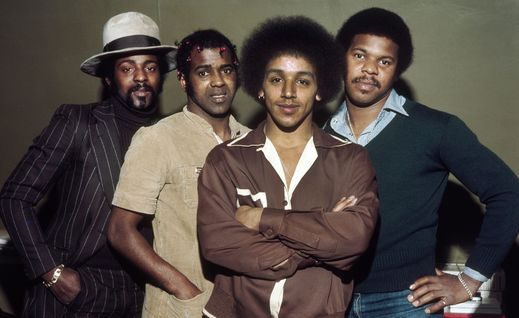Let’s talk about Liverpool’s other musical export… On first listening, The Real Thing’s 1976 uptempo soul ballad ‘You To Me Are Everything’ sounds like it could have been penned by Motown writers Holland-Dozier-Holland or crafted in Gamble & Huff’s Philadelphia studios. The reality is that this classic piece of American soul music was actually born across the pond in Liverpool by The Real Thing, who styled themselves on established US acts such as Tavares and The Temptations.
The arrangement and production of the tune is a note-perfect pastiche of soul and disco conventions; a funky electric piano hook, bubbling single-note guitar parts and sweeping string lines all helping to outline the staple I – vi – ii -V chord progression (the use of Gsus4 and G7sus4 chords in place of the expected G7 quality of the V chord is a common trick used in soul, R’n’B and pop writing to stop things sounding too ‘jazzy’).
Then there’s the bass. Jerome Rimson provided the grooving, syncopated 16th-note line that provides the song with an element of funk. The influence of Motown bass virtuoso James Jamerson can clearly be heard in almost every aspect of the line. The key Jamerson-isms that Rimson uses are:
1. Frequent 16th-note syncopation
The entire line is built upon variations of the following 1-bar rhythm, which manages to be busy without overcrowding the mix:

Note the way that Jerome leaves breathing space on beat 2 so the snare drum can cut through.
2. Scalar and chromatic approaches in You To Me Are Everything
The core of the bass line uses roots, 5ths and octaves to outline the harmony, with the addition of some Jamerson-approved approaches. The most common are the use of a Root-5th-6th pattern over a major chord (à la Marvin Gaye’s ‘What’s Going On’) and a double chromatic approach from below into the root note (bars 3, 9 ,11, 29, 35, 37, 56, 71 and 72).
3. ‘Bouncing’ off open strings
Many of the fills require you to use open A- and D-strings strings to get the correct sound and feel. Both of these are diatonic to C major and D major, although it’s worth noting that Jamerson would often use open strings that weren’t in the key in many of his lines, such as The Four Tops’ ‘Reach Out, I’ll Be There’ which utilises the open A-string as a frequent approach note even though the tune is in Eb minor.
These concepts, combined with a thick, warm tone help to create a solid, soulful addition to James Jamerson’s bass legacy.

